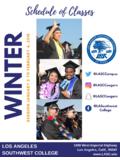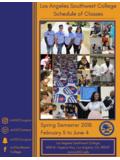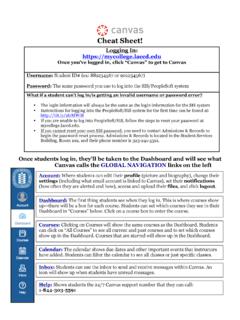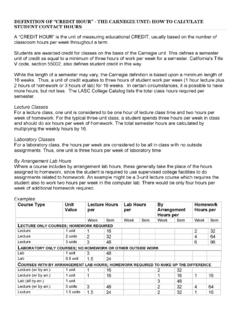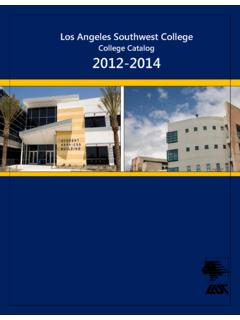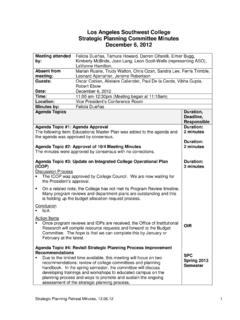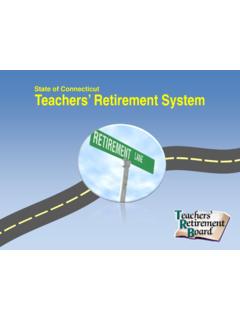Transcription of ESL Resource Guide,Revised FAQs 12 22 06
1 ESL NEW TEACHER Resource guide Authors: Trish Kerns Marilyn Knight-Mendelson Editor: Mary Ann Corley March 2004 revised : December 2006 California Adult Literacy Professional Development Project American Institutes for Research 2880 Gateway Oaks Drive, Suite 220 Sacramento, CA 95833 A California Department of Education Project MODEL CASAS TESTING? TOPSPRO?SCANS?LESSON PLANS? STANDARDS?i Contents Additional Materials (Available through your CALPRO Professional Development Center) Teacher Training through Video: Lesson Planning. Longman, Inc. Model Standards for Adult Education Programs: ESL. California Department of Education, 1992.
2 Handbook for Adult Education Instructors: ESL. California Department of Education, 1995. Page Introduction 1 Who are My Students? The Adult ESL Learner 2 Before You Start Teaching: Questions to Ask about Procedures at Your Site 3 When You Start Teaching: Six-Stage ESL Lesson Plan 5 California Model Program Standards for ESL 6 ESL Instructional Techniques: Teacher Training Through Video 8 Assessment and Accountability 10 Implications for Adult Educators of the SCANS Report 11 10 Easy Things You Can Do to Integrate Workplace Basics (SCANS Competencies) Into Your Classroom 12 General Strategies for Managing a Multi-level ESL Class 13 ESL Multi-level Model 1 14 ESL Multi-level Model 2 15 Resources for Adult Educators 16 Appendices Frequently Asked Questions in Adult ESL Literacy.
3 National Center for ESL Literacy Education A-1a Needs Assessment Beginning A-2a Needs Assessment Intermediate A-2b 1 Introduction To a new english as a second language (ESL) teacher in an adult education program, the task of teaching english can seem overwhelming. This ESL New Teacher Resource guide , developed by the California Adult Literacy Professional Development Project (CALPRO), is designed to introduce you to the most immediate and important aspects of teaching adult ESL in California. A teacher new to ESL often asks such questions as, Who will my new students be? What is their english proficiency? What materials should I use? How do I assess my students and document their progress?
4 Many local agencies have procedures and practices that address these issues and will provide guidance to new teachers. The California Department of Education (CDE) has specific requirements and also provides certain documents to guide you. This Resource guide presents a brief overview of this information, provides examples of the most important documents you will need, and leads you to resources that will inform your teaching. The guide is available on the CALPRO Web site at Relevant support materials (including a teacher training video on ESL lesson planning and selected CDE publications) are available for loan from the CALPRO Professional Development Centers (PDCs). To locate and/or contact your local PDC, visit the CALPRO Web site and click on Professional Development Centers.
5 Then click on PDC Locator and select your county of residence. You will be directed to the PDC that serves your region. You can also contact the CALPRO Office at 1-800-427-1422. Teaching ESL can be an exciting and fulfilling experience. We hope that this guide will make your experience more manageable and rewarding. 2 Who are My Students? The Adult ESL Learner Getting to know your ESL learners should be one of your top priorities. Here are a few characteristics of adult learners to keep in mind. Adult Learners may: Represent a wide range of educational backgrounds. They may have from little to no formal education in their native language , to completion of university and advanced degrees in their native languages.
6 In addition, they may or may not have some previous education in english and/or in the United States. Be goal-oriented and highly motivated. They have come to you for a specific reason. Their goal(s) may be long or short term. They should be involved in sharing and setting their learning goals. Bring different skills, interests, backgrounds, and life experiences to the learning situation. They have rich life experiences, and the instructor should capitalize on this diversity in the learning environment. Want or need immediate application. Adult learners need to apply what they are learning. The learning tasks must be practical, have a clear purpose, and directly relate to their everyday lives.
7 Have different learning styles. Adult learners often relate to their previous educational experiences. Some may learn by doing, others by listening, speaking, reading, or writing. Many students learn better when there are visuals (pictures) or realia (real things, such as articles of clothing) to use. Be very busy. They may work more than one job in addition to going to school and taking care of their families. They may be tired during class and have difficulty staying on task for long periods of time. Have different levels of proficiency. Student levels may differ in listening, speaking, reading, and writing in both their first and second languages. Have a poor self-concept. Many people do not see themselves as learners.
8 Some do not think they can learn or that they know how to learn. Excerpted from the ESOL Starter Kit, Virginia Adult Learning Resource Center. October 2002, p. C-2 3 Before You Start Teaching: Questions to Ask About Procedures At Your Site Many types of agencies provide educational services to ESL students in California. You may be working or volunteering for an adult school run by a local school district, a community college, a library literacy program, a correctional facility, a county office of education, or a community- or faith-based organization. You will want to find out the answers to the following questions about your teaching assignment before you start. 1. What do I need to know about my classroom?
9 What about the school site? Where is my classroom? Is it locked? If so, who will open it? What are the security procedures? What hours and days will the classes be held? Will I work evenings or Saturdays? Is there an instructional aide to help out in the classroom? Is the room furnished appropriately for adults? Who is the agency contact person? Where are the restrooms? Are they always open? Is there a designated smoking area? Where can I park my car? Is there another teacher on site? Is there access to clerical staff and audio-visual and copier equipment on site? 2. What routine procedures at my teaching site do I need to know? What s the procedure for getting paid? How do I handle student attendance?
10 What forms are required and to whom do I submit them? Is there a minimum and/or maximum number of students required for my class? How do I request substitute teachers? What is the instructional calendar? How do I obtain professional development? 3. How are students registered and placed in my class? Your agency may have a formal process to register new students. In this case, when students enter your class, they will have completed an intake form and possibly a placement test to determine their level of english proficiency. Some agencies, however, require that the teacher conduct the registration 4 and placement process with new students. Ask your supervisor about your responsibilities in this area and about the forms, tests, and other resources that are available to you.


